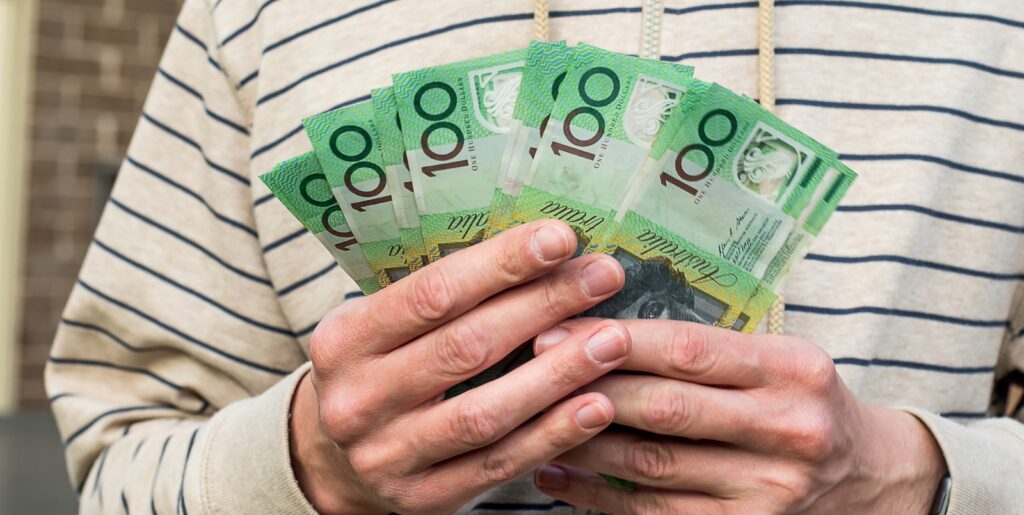When competition between banks was rife post-Covid, many were offering cashback loan deals for those who refinanced.
Put simply, banks would ‘gift’ you between $2000 and $4000 if you switched from another bank and borrowed with them instead.
But the deals dried up and were mostly gone from the market by the beginning of 2023.
Well, now they’re back. As the RBA refuses to cut the cash rate, more Aussies are looking to get a better deal elsewhere and the lender market is back to being super competitive.
New research by Finder has revealed dozens of refinance deals have hit the market once again, with $4000 again being the upper end of the offerings available.
The research suggests a $4000 offer would effectively reduce the average variable rate of 6.28 per cent in the first year to 5.47 per cent on the average Australian loan of $642,000.
How do they work?
Lenders offer a set amount of cash, or other incentives like frequent flyer points and holiday vouchers, as one off payments to borrowers that might make it worth their while to switch.
These incentive deals are nicknamed ‘cashback loans’, but are actually known as refinance cash rebates.
Banks have realised that many Australians are behind on their bills and cash poor in general in the current cost of living crisis. A cash gift might help with an overdue bill or money for Christmas gifts, so it makes the most sense as the best way to win someone else’s customers.
But in some cases, the upfront cash injection can mask the fact you’ll be worse off in the long term if you sign up to the new deal.
Best way to use it
The whole point of a rebate is to cover the costs of moving loans to another bank.
Expenses such as government fees for discharge of title, discharge of mortgage, title
registration, costs of title searches, settlement fees and solicitor documentation fees.
If you break a fixed rate mortgage term, you will also incur early exit fees.
So if you opt for a cash rebate, don’t start planning your next holiday without first
covering off those costs.
Of course, putting that rebate straight back into your loan will save you even more when
interest is taken into account.
Long term pain
The extra cash you get could dry up quickly if the loan is less flexible than your previous one, or if it doesn’t suit your specific needs.
Lower interest rates add up to significant savings over the life of a loan, usually much more than a few thousand dollars’ worth.
Of course, not many people these days choose a loan and stick with it for the full term – you may change homes a number of times – so if you refinance regularly, you can make good use of the incentives on offer at any given time.
Before you do take the plunge however, make sure you read the fine print. Most lenders will have a minimum loan amount that qualifies for the rebate.
Usually these deals are also restricted to owner occupiers, so if you are building an investment portfolio, you won’t be eligible.
Beware mortgage jail
The other thing to consider is that after all those rate rises, it is harder than before to refinance.
On average, borrowing power is down more than 30% since rates started rising. If you were eligible to borrow $1 million back in early 2022, you may now struggle to get approved for a $700,000 loan.
And then, there is still a 3% serviceability buffer in place, which means that if you are trying to refinance to a loan with a 6% rate, you will need to show you can service repayments at 9%. A lot of people would be surprised to find themselves ineligible to switch to a loan with a lower interest rate than they are already paying.
As ridiculous as that sounds, that’s how the banks’ lending criteria works! So if a cashback refinance suits you, and you are eligible, good luck.





